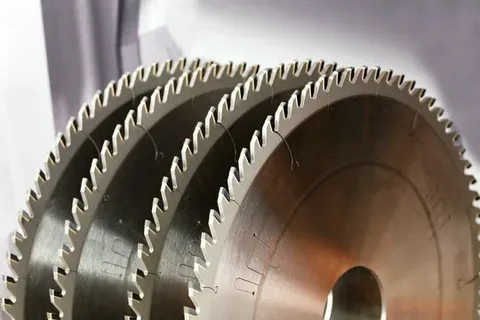In Ireland’s high-output meat processing industry, precision, hygiene, and safety are the cornerstones of success. Whether you’re processing pork in Cork or beef in Ballina, the right splitting saw can dramatically improve carcass quality, reduce operator fatigue, and streamline your workflow. But with so many options on the market, how do you choose the best abattoir saws Ireland has to offer?
This guide breaks down everything you need to know—from selecting the right hog splitting saw Ireland processors trust, to integrating your saws with supporting meat cutting tools, knife sharpening tools, and essential abattoir equipment.
Why Splitting Saws Matter in Modern Abattoirs
Splitting saws are the backbone of carcass breakdown. A poorly selected or maintained saw can lead to bone dust contamination, uneven cuts, and even operator injury. In high-throughput Irish abattoirs, these issues can quickly escalate into costly delays or compliance failures.
A high-quality hog splitting saw that Ireland facilities rely on ensures:
- Clean, consistent cuts through the spinal column
- Reduced bone fragmentation and dust
- Lower risk of cross-contamination
- Improved ergonomics and operator safety
Choosing the right saw isn’t just about power—it’s about precision, hygiene, and long-term reliability.
Types of Splitting Saws: Which One Fits Your Operation?
There are two main categories of splitting saws used in Irish abattoirs: powered saws (electric or pneumatic) and manual saws.
Electric and pneumatic saws are ideal for high-volume facilities. These saws offer high torque and speed, making them perfect for processing large carcasses quickly and cleanly. Brands like Kentmaster saws are widely used across Ireland for their durability, ease of maintenance, and ergonomic design. These saws often feature bone chip deflectors, vibration dampening, and tool-free disassembly for cleaning.
Manual saws, or hand-sawed tools, are still used in smaller operations or for specialty cuts. While they require more physical effort and operator skill, they offer unmatched control and are ideal for game, exotics, or low-volume processing. Manual saws are often paired with traditional meat-cutting tools and knife-sharpening tools to maintain blade performance.
Matching the Saw to the Species
Different animals require different saw specifications. Here’s how to match your saw to the species you process:
- Pigs: For pork processing, a dedicated hog splitting saw, the Ireland model, is essential. These saws are designed to handle the dense bone structure of pigs while minimising bone dust. Look for models with low vibration and high cutting torque to maintain hygiene and reduce operator fatigue.
- Beef: Beef carcasses require heavy-duty saws with robust motors and reinforced blades. Kentmaster saws are a popular choice for beef processing in Ireland due to their power and precision. Features like bone chip deflectors and ergonomic handles are crucial for maintaining cut quality and operator safety.
- Sheep and Goats: These smaller animals benefit from compact electric saws that are lightweight and easy to manoeuvre. A smaller blade radius allows for more precise cuts, reducing waste and improving yield.
- Game and Exotics: For specialty meats, hand-sawed tools offer the control needed for delicate or irregular carcasses. These are often used in artisan or niche processing facilities where precision is more important than speed.
Hygiene & Compliance: Built-In Cleanability
In Irish abattoirs, hygiene is not just a best practice—it’s a legal requirement. Your abattoir equipment must be easy to clean, resistant to corrosion, and compliant with food safety regulations.
When choosing a splitting saw, look for:
- Stainless steel construction to resist rust and bacterial growth
- Smooth surfaces and minimal crevices to prevent debris buildup
- Tool-free disassembly for quick and thorough cleaning
To further enhance hygiene, many facilities are now integrating cold room UV sanitation systems. These systems use ultraviolet light to reduce microbial load in chillers and cutting rooms. For premium meat programs, dry ageing UV lights are also used to maintain hygiene during the ageing process without compromising flavour or texture.
Cold Room Compatibility & Ergonomics
Splitting saws must perform reliably in cold, damp environments. If your processing area includes chillers or cold rooms, your equipment must be rated for low-temperature operation.
Key features to look for include:
- Anti-slip grips that work well with gloved hands
- Motors and components rated for cold starts
- Sealed electrical systems to prevent moisture ingress
Ergonomics also plays a major role in operator safety. Choose saws with balanced weight distribution, padded grips, and low vibration output. These features reduce wrist and shoulder strain—especially important when used alongside other meat processing equipment for extended periods.
Maintenance & Sharpening: Keep It Cutting Clean
Even the most advanced Kentmaster saws require regular maintenance to perform at their best. A dull or misaligned blade can cause uneven cuts, increase operator fatigue, and pose a safety risk.
Here’s a basic maintenance routine:
- Daily: Clean and lubricate the saw after each shift. Check for blade wear or damage.
- Weekly: Inspect all moving parts, tighten fasteners, and test safety features.
- Monthly: Sharpen blades using professional knife sharpening tools. Replace worn components as needed.
Pair your saws with high-quality meat cutting tools and source parts from trusted butcher equipment near me suppliers who offer local support and servicing.
Workflow Integration: Tools That Work Together
A splitting saw is only one part of a larger system. For maximum efficiency, it should integrate seamlessly with your other abattoir equipment and workflow tools.
Consider pairing your saws with:
- Foodline balancers to reduce operator fatigue and improve control
- Ergonomic meat cutting tools for trimming, boning, and breakdown
- PPE such as cut-resistant gloves, chainmail aprons, and face shields
When your tools work together, you reduce downtime, improve yield, and create a safer, more efficient processing environment.
Training & Safety Protocols
No matter how advanced your equipment is, it’s only as safe as the people using it. Proper training is essential for preventing accidents and ensuring compliance.
Training should include:
- Safe handling and operation of the hog splitting saw Ireland models
- Cleaning and maintenance procedures
- Emergency stop and lockout/tagout protocols
- Proper use of PPE and hygiene practices
Many suppliers of abattoir saws in Ireland offer on-site training and certification. Take advantage of these services to keep your team sharp and your facility compliant.
SUMMARY
Precision, Power, and Protection
Choosing the right splitting saw is about more than just cutting—it’s about cutting smart. Whether you’re investing in a high-powered hog splitting saw Ireland processors trust or maintaining a fleet of Kentmaster saws, the right equipment improves yield, reduces risk, and keeps your operation running smoothly.
Support your saws with reliable knife sharpening tools, integrate cold room UV and dry ageing UV lights for hygiene, and streamline your workflow with foodline balancers and ergonomic meat cutting tools. Whether you’re upgrading your abattoir equipment or launching a new facility, this guide ensures you’re equipped for success.







